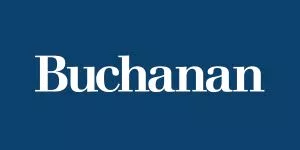- in United States
- with readers working within the Pharmaceuticals & BioTech industries
- within Accounting and Audit, Finance and Banking and Consumer Protection topic(s)
On September 5, 2025, President Trump signed an Executive Order (EO), "Modifying the Scope of Reciprocal Tariffs and Establishing Procedures for Implementing Trade and Security Agreements" (Tariff Modification Order).1 The Tariff Modification Order modifies the scope of the reciprocal tariffs previously imposed under the president's April 2, 2025, EO, "Regulating Imports with a Reciprocal Tariff to Rectify Trade Practices that Contribute to Large and Persistent Annual U.S. Goods Trade Deficits" (EO 14257).2 As discussed previously, EO 14257 initially imposed 10% tariffs on all countries under the authority of the International Emergency Economic Powers Act (IEEPA), with higher reciprocal tariffs applied to trading partners with which the U.S. had large and persistent trade deficits.
The Tariff Modification Order made multiple modifications to the reciprocal tariffs established under EO 14257, including: (1) limiting the scope of the reciprocal tariffs by excluding certain commodities, such as various types of gold, critical minerals, chemicals, and plastics; (2) expanding the scope of the reciprocal tariffs to include previously excluded commodities under EO 14257's Annex II;3 and (3) identifying another class of products that are potentially eligible to be exempted from reciprocal tariffs for trading partners that enter a trade agreement with the United States.
Modification of Scope to Exclude Certain Products from the Reciprocal Tariffs
The Tariff Modification Order at Annex I includes additional
commodities in Annex II that will no longer be subject to the
reciprocal tariffs. The newly excluded commodities include
bullion-related articles, certain critical minerals, and
pharmaceutical products subject to pending Section 232
investigations. The modifications to Annex II took effect with
respect to goods entered or withdrawn from a warehouse for
consumption on or after 12:01 a.m. EDT on September 8,
2025.4
Modification of Scope to Include Certain Products from the Reciprocal Tariffs
The Tariff Modification Order also expands the scope of the reciprocal tariffs to include additional products by removing them from Annex II's list of exempted products. Products now subject to the reciprocal tariffs include aluminum hydroxide, resin, and silicone products.5 Such modifications to Annex II took effect on or after 12:01 a.m. EDT on September 8, 2025.
Impact of Negotiation of Future Trade Agreements
Notably, the Tariff Modification Order indicates that the president may be willing to suspend reciprocal tariffs, and/or to reduce Section 232 tariffs (i.e., to only apply most-favored-nation duties), for a wide range of products imported from countries with which the U.S. concludes a final trade and security agreement.6 Annex III to EO 14257 previously provided a list of products that are potentially eligible to be exempted from reciprocal tariffs for trading partners that enter a trade agreement with the United States, based on whether a "trading partner take{s} significant steps to remedy non-reciprocal trade arrangements and align sufficiently with the United States on economic and national security matters."7
The administration's willingness to reduce tariffs to zero percent for specific imports or to alter Section 232 tariffs will depend on various factors, such as the scope and economic value of a partner's commitments in its reciprocal trade agreement, U.S. national interests, the need to address the national emergency declared in EO 14257, and the importance of mitigating threats to national security identified under Section 232.
The list of imports that may be eligible for a zero percent
reciprocal tariff rate is set forth in Annex III to EO 14257
entitled "Potential Tariff Adjustments for Aligned
Partners."8 Annex III contains products that cannot
be grown, mined, or naturally produced in the United States or
grown, mined, or naturally produced in sufficient quantities in the
United States to satisfy domestic demand; certain agricultural
products; aircraft and aircraft parts; and non-patented articles
for use in pharmaceutical applications.9
The list of specific imports both provides a strategic guide for trade partners and offers an incentive to promote the trade partner's engagement with future trade agreement negotiations. Indeed, the incentive to reach a trade agreement and receive a zero percent reciprocal tariff rate for a listed good is compounded by the EO's contemplation that future trade agreements could apply retroactively, allowing U.S. Customs and Border Protection to refund duties previously paid. These incentives highlight the primacy of trade as a tool of statecraft under this administration, as well as its continued efforts to mint trade agreements that meet U.S. trade and security imperatives through engagement with global trading partners.
The administration's use of IEEPA to implement worldwide reciprocal tariffs is currently under judicial review. On August 29, 2025, the United States Court of Appeals for the Federal Circuit (CAFC) ruled that President Trump exceeded his authority when he imposed global tariffs under IEEPA. The CAFC remanded the case back to the Court of International Trade (CIT) to reconsider the issue of its permanent injunction, which the CAFC vacated. The decision is stayed until October 14, 2025, giving the government time to appeal to the Supreme Court of the United States. The Supreme Court will hear arguments regarding the legality of the president's reciprocal tariffs in the first week of November. While the litigation is ongoing, the global tariffs President Trump issued will remain in place.10 The current litigation and recent appeal to the Supreme Court reflect the magnitude of the economic impact and uncertainty surrounding the reciprocal tariffs, requiring companies to remain abreast of the ongoing developments.
Buchanan's team of international trade and national security attorneys and government relations and international trade professionals is closely monitoring developments and is ready to help U.S. manufacturers with U.S. trade remedy laws and trade policy. Our dedicated team has decades of experience supporting clients across a range of industries – ranging from steel, critical minerals, mining, chemical, rubber, and agricultural products – to ensure that the U.S. market is operating under fair and equal conditions.
Footnotes
1. Executive Order, Modifying the Scope of Reciprocal Tariffs and Establishing Procedures for Implementing Trade and Security Agreements, The White House (Sept. 5, 2025), available at https://www.whitehouse.gov/presidential-actions/2025/09/modifying-the-scope-of-reciprocal-tariffs-and-establishing-procedures-for-implementing-trade-and-security-agreements/.
2. Executive Order 14257, Regulating Imports With a Reciprocal Tariff To Rectify Trade Practices That Contribute to Large and Persistent Annual United States Goods Trade Deficits, 90 Fed. Reg. 15,041 (Apr. 7, 2025), available at https://www.federalregister.gov/documents/2025/04/07/2025-06063/regulating-imports-with-a-reciprocal-tariff-to-rectify-trade-practices-that-contribute-to-large-and.
3. See Annex II to EO 14257, available at https://www.whitehouse.gov/wp-content/uploads/2025/09/ANNEX-II.pdf.
4. See Annex I to the Modifying the Scope of Reciprocal Tariffs EO for the specific HTSUS numbers affected by these changes.
5. Specific HTSUS numbers affected by these changes are located in Annex I to the Modifying the Scope of Reciprocal Tariffs EO.
6. Tariff Modification Order at Section 1.
7. EO 14257, 90 Fed. Reg. at 15,047.
8. See Annex III to EO 14257, available at https://www.whitehouse.gov/wp-content/uploads/2025/09/ANNEX-II.pdf.
9. Tariff Modification Order at Section 1.
10. See V.O.S. Selections, Inc. v. Trump, No. 2025-1812, 2025 WL 2490634, (Fed. Cir. Aug. 29, 2025), cert. granted sub nom. Trump, President of U.S., et al. v. V.O.S. Selections, Inc., et al. (U.S. Sept. 9, 2025).
The content of this article is intended to provide a general guide to the subject matter. Specialist advice should be sought about your specific circumstances.




